- (+356) 2156 1230
- info@townhouse17.com
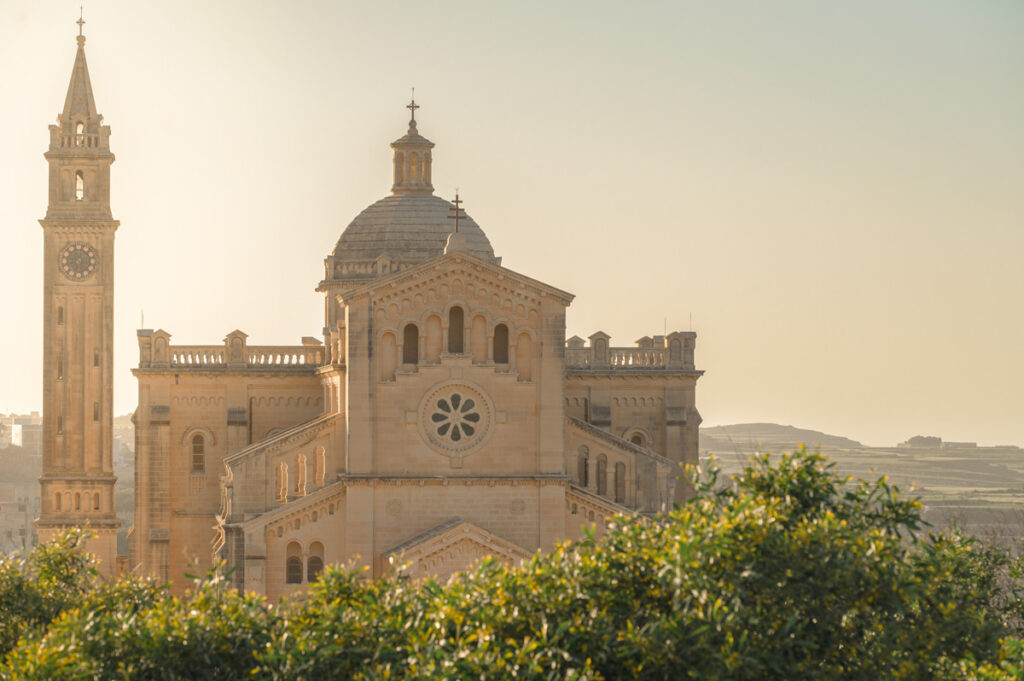
By the 15th century, Gozo’s countryside was dotted with small chapels and shrines—over fifty in total. Among them, in the remote area of Ta’ Għammar, stood a modest chapel that would later become one of the island’s most cherished pilgrimage sites in Gozo, known today as Ta’ Pinu.
A turning point came in October 1886 when a local woman, Vincenza Portelli, lay gravely ill. Her sons—Franġisk, Nikol, and Nardu—embarked on a barefoot pilgrimage to Ta’ Pinu chapel, praying for her recovery and vowing to keep an oil lamp burning in gratitude if she was healed. When Vincenza made a remarkable recovery, word spread quickly, strengthening the local community’s faith in the sacredness of the site.
Historical records name the chapel as Santa Marija ta’ Ġentile, after its benefactor, Ġentile Calimera, a Gozitan resident from around 1400. He not only funded its construction but also donated a parcel of land to support its upkeep and ensure annual mass celebrations.
The chapel underwent reconstruction in 1545, but the following decades were difficult. Gozo faced frequent raids from corsairs, and by 1575, the chapel had fallen into disrepair. According to local tradition, a man who attempted to remove stones from the structure suffered severe injuries—an event interpreted as a divine warning to preserve the chapel.
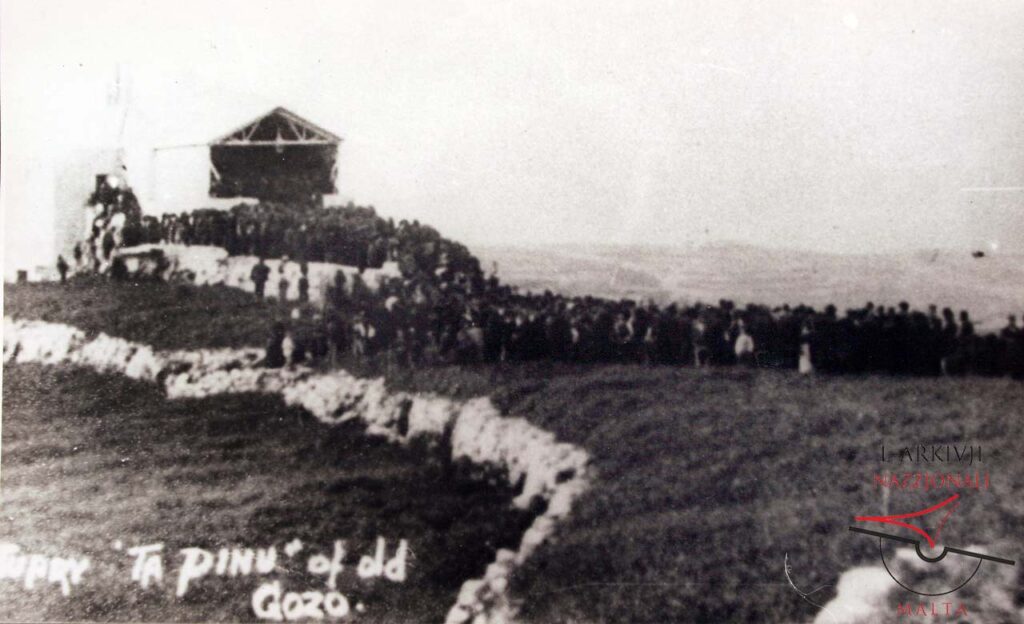
In 1593, the land was leased to a man named Pinu Gauci, who took responsibility for restoring the chapel. His devotion led him to commission a new altarpiece for this humble chapel from Valletta-based artist Bartolommeo Amodeo Perugino in 1619. The painting, depicting the Assumption of the Virgin Mary, became the heart of the chapel, and over time, the site became known as Santa Marija ta’ Pinu, with the revered image called il-Madonna ta’ Pinu.
Despite periods of neglect, the chapel remained an important Catholic landmark in Malta, but its destiny was about to take an extraordinary turn.
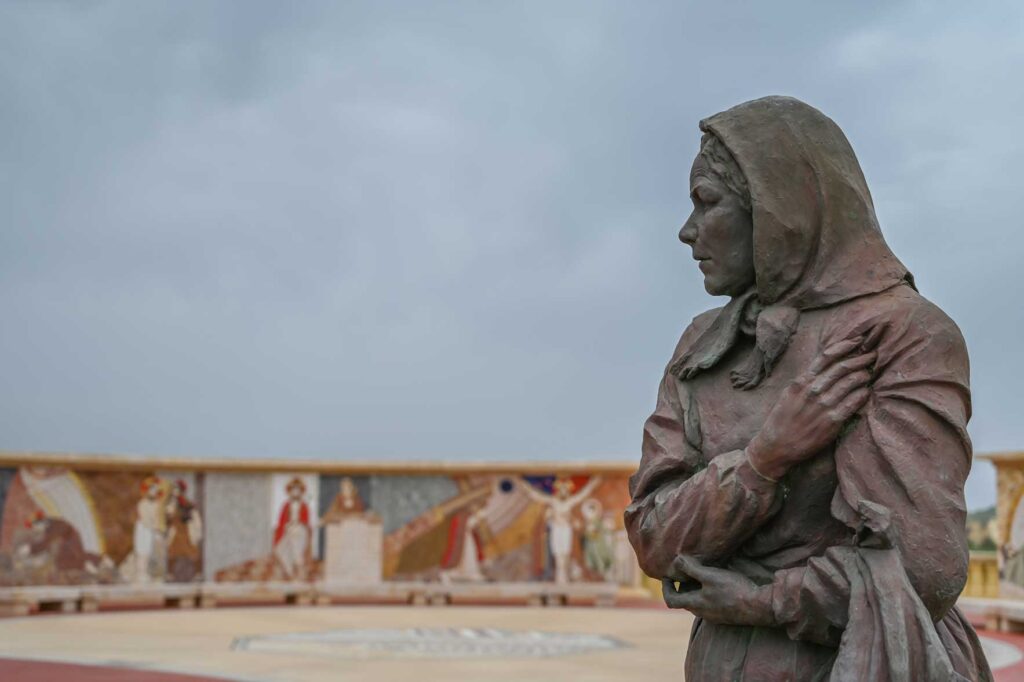
On 22 June 1883, Karmni Grima, a 45-year-old woman, was returning home from the fields when she heard a mysterious voice calling to her: “Come! Come!” At first hesitant, she then heard: “Come today, for you will not be able to return for an entire year.” Overcome with awe, she entered the chapel, knelt before the Madonna ta’ Pinu, and experienced an overwhelming sense of peace. The voice then instructed her: “Recite three Hail Marys in honour of the three days my body lay in the tomb.”
For two years, Karmni kept this experience to herself until she finally confided in Franġisk Portelli, the same man who had prayed for his mother’s recovery at the chapel. Their shared devotion fueled a growing belief in the miracles of this site.
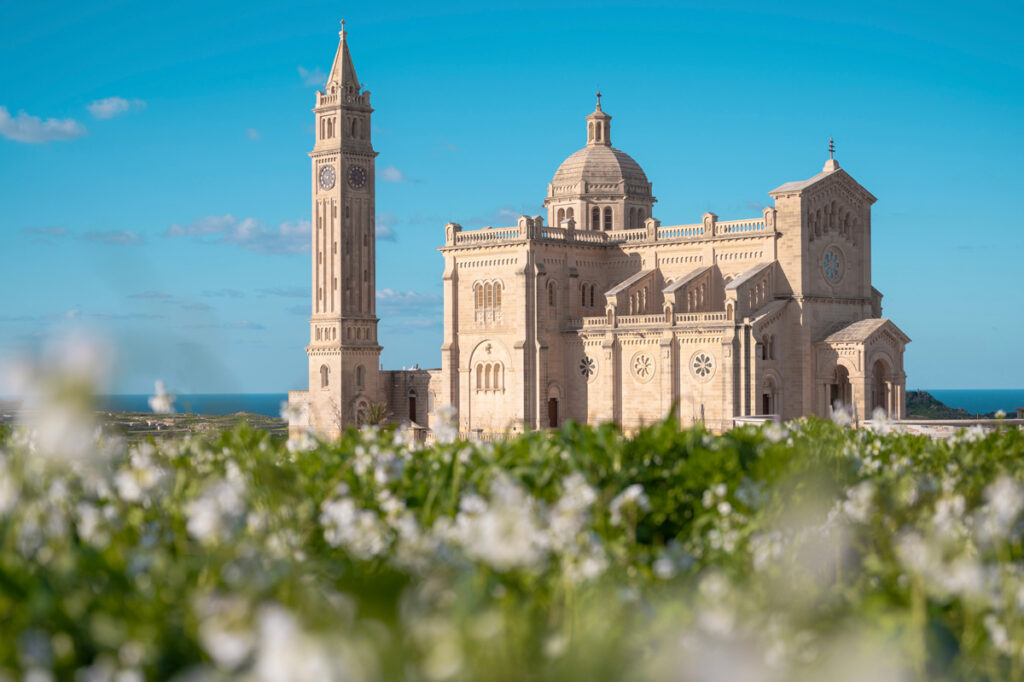
By April 1887, both Karmni’s vision and Vincenza’s miraculous healing had become widely known, attracting visitors to the Shrine. Pilgrims arrived individually, in small groups, and later in large processions. As attendance grew, the chapel could no longer accommodate everyone, leading to outdoor masses at Ta’ Pinu under a temporary canopy.
Recognizing the need for a larger sanctuary, Bishop Ġovanni-Marija Camilleri initiated the construction of a new church, incorporating the original chapel within Ta’ Pinu Basilica. Progress was slow, but on 30 May 1920, the foundation stone was laid. Architect Andrè Vassallo envisioned a Romanesque-style church, with grand arches and robust stonework characteristic of the period’s revivalist architecture.
Completed in the 1930s, the new Sanctuary of Ta’ Pinu became a revered place of faith and devotion in Gozo. Its solid stone façade is imposing, while inside, soaring arches, stained glass windows, intricate mosaics, and decorative friezes create a breathtaking setting for prayer and reflection. Surrounding the church’s forecourt are twenty mosaic panels, illustrating the Mysteries of the Holy Rosary.
Dedicated to the Assumption of the Blessed Virgin, the Basilica of Ta’ Pinu in Gozo was formally consecrated on 13 December 1931. Decades later, on 26 May 1990, Pope Saint John Paul II visited Ta’ Pinu, celebrating mass outside the church and crowning the Madonna ta’ Pinu image with a halo of golden stars embedded with diamonds. In 2022, Pope Francis visited Ta’ Pinu, leaving a golden rose—a traditional papal gift to Marian shrines in Europe.
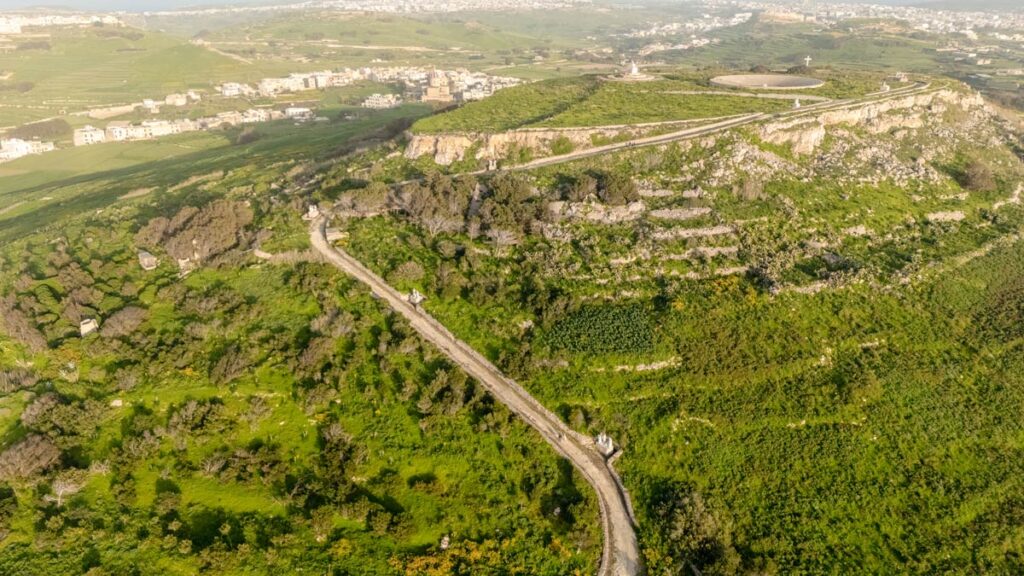
Across from the basilica, Ta’ Għammar Hill features a series of white Carrara marble statues representing the Stations of the Cross. Installed in the early 1980s, these sculptures have since become a place of pilgrimage in Gozo and quiet reflection.
Today, Ta’ Pinu continues to draw thousands of visitors each year, whether for personal devotion, cultural curiosity, or simply to experience its peaceful surroundings. More than just a historic landmark in Gozo, The Basilica remains a symbol of faith, resilience, and spiritual connection between Gozo and its people.
For our guests, getting from Townhouse 17 Boutique B&B to Ta’ Pinu is very easy. Simply cross the road from your accommodation to the Bus Terminal and board Bus 308 (leaves hourly). If you like a nice walk, the Shrine is only 3.5KM away from Townhouse 17 and the walk, which should take about 50minutes, is quite scenic.